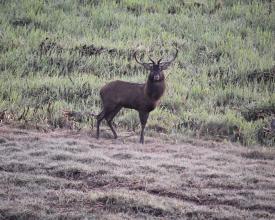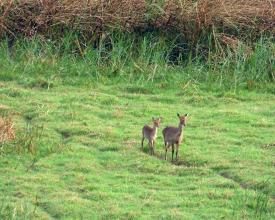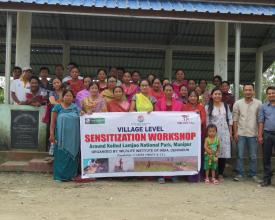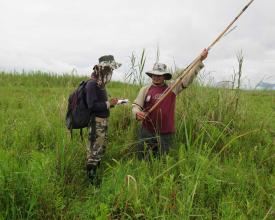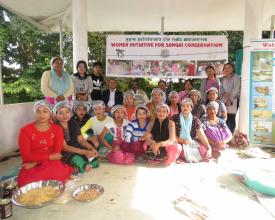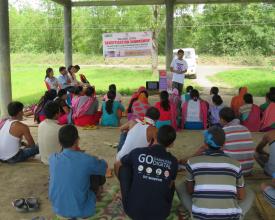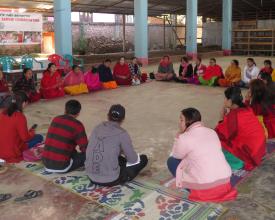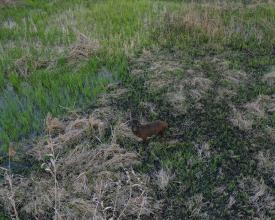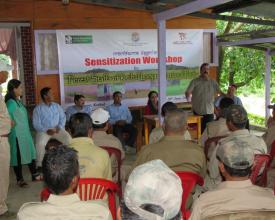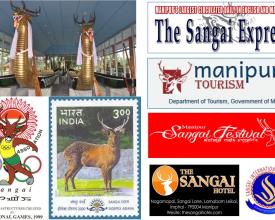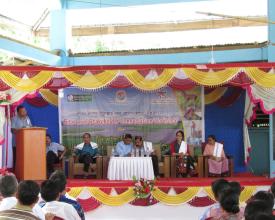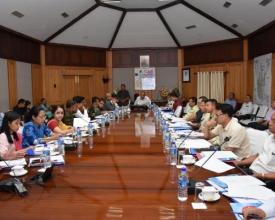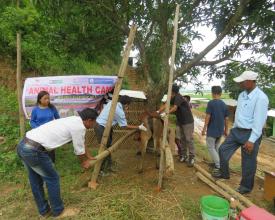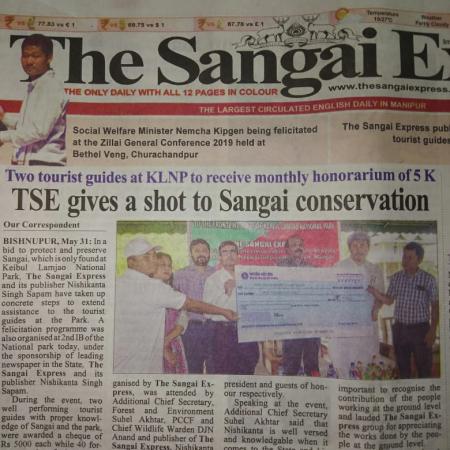
Conservation at the door step: Securing the population of a critically endangered species of deer
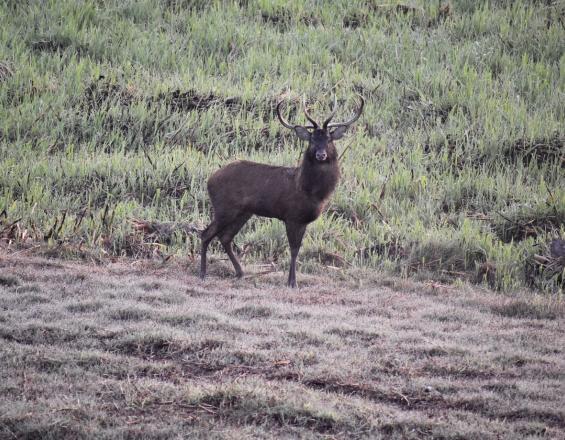
The Eld's deer or brow-antlered deer Rucervus eldii eldii is one of the most endangered species of cervids in the world. The Eld’s deer also known as Sangai, exists as a single, isolated and small population in the floating meadows of Keibul Lamjao National Park, Manipur, India. The population and habitat of the Sangai is being secured through multi-pronged approach using scientific, societal and policy interface.
Context
Challenges addressed
The Keibul Lamjao National Park (KLNP) is the last natural habitat of Sangai. The Park covers an area of 40 sq. km, of which only 23 sq. km is floating meadows and the rest is open water and hillocks. These floating meadows form the main habitat, which provides food, shelter and breeding sites. The Sangai was considered extinct until a small population of around 14 individual was rediscovered in the early 1950s.
Sangai’s habitat, the floating meadows are the most unique habitat in the world. Little scientific information was available on habitat and feeding ecology, and as a result robust scientific management strategies were lacking. Though, Sangai is considered to be the Pride of Manipur, local people were unaware about the uniqueness of its habitat and were thus extracting resources from KLNP. Rampant resource extraction caused disturbances to the habitat, especially during the rutting season. The lack of awareness had also resulted in unregulated and un-restricted cattle grazing.
Location
Process
Summary of the process
A four-step approach is being followed in KLNP and the adjoining landscape, that includes a combination of scientific studies, awareness generation, advocacy and policy interventions, and livelihood support. Scientific studies have been conducted to generate information on resource dependence of the local communities as well as impact of such dependency on Sangai and its habitat. State-wide awareness programmes designed for specific target groups are being carried out. Consultations with the local communities and other stakeholders are being held at different levels of governance regularly. These workshops have assisted in building larger constituency for Sangai conservation, at management, policy and grass root levels. Active community participation of local communities and different stakeholders’ involvement in the management of the Park for successful conservation Sangai is being ensured through various capacity building programs, aiming at providing alternative livelihoods. In addition to stakeholder workshops and capacity building programs, trust building programs, such a health camps for human and livestock, provision of clean drinking water during floods are also being undertaken
Building Blocks
Securing existing population in Keibul Lamjao National Park
The existing population of Sangai is being secured through integrated management plan, implemented by the Manipur Forest Department. Integrated management plan involves continuous habitat management strategies, habitat and population monitoring, enhanced patrolling strategies, genetic studies and involvement of local communities and different stakeholders at KLNP.
Enabling factors
1. State forest department's interest.
2. Sangai is an important cultural symbol in Manipur, and hence is considered as pride of Manipur, by local people and Government of Manipur.
3. Supportive Government of India, which provides funding and other support.
Lesson learned
1. Rigorous field work is critical for identification of habitat requirement of Sangai, and other related aspects of population management.
2. Continuous monitoring ensues long term success.
Involving local communities in conservation process
To garner political and local support for Sangai conservation in KLNP, advocacy was done with all stakeholders. In addition, appropriate measures are being undertaken to improve the awareness of the local people for conserving the species and promote Sangai as the mascot of sustainable development through various capacity building programmes.
Enabling factors
1. State forest department's interest.
2. Sangai is an important cultural symbol in Manipur, and hence is considered as pride of Manipur, by local people and Government of Manipur.
3. Supportive Government of India, which provides funding and other support.
Lesson learned
1. Multi-stakeholder dialogue builds transparency and trust.
2. Addressing livelihoods of local communities dependent on resources is indispensable .
Impacts
As a result of the four-step approach adopted for Sangai conservation, scientific management regime for the conservation of Sangai at KLNP has been put in place through research and consultation with the dependent local communities and other stakeholders. These interventions are creating a positive environment for developing a larger societal constituency for conservation of the Sangai as well as sustainable development of the local communities.
Beneficiaries
Protected area managers (at site, management authority or local government level), Local community, and scientific community.
Sustainable Development Goals
Story

To address the challenges, research was carried out on habitat and feeding ecology, demography and genetic status of Sangai by Wildlife Institute of India. Socio-economic status of people living around the KLNP and their dependence on park resources was also assessed. The research lasting more than a decade resulted in information which was communicated to a wide range of stakeholders. A series of discussions and meetings with the communities residing along the park periphery were undertaken. During these meetings the community members were made aware about Sangai conservation issues and the community members discussed the problems faced by them. These dialogues and meetings highlighted the need for improving the socio-economic status of local people through alternate sustainable livelihood options, which in turn would reduce the dependency on the park resources. Thus the alternate livelihood options were also explored through consultations and dialogue with community members. During these meetings, it was agreed to build capacity of the local communities by promoting conservation friendly alternate livelihood, under eco-development initiatives in the surrounding villages. In view of this, a series of livelihood trainings on value addition of local resources were conducted for local women, and ecotourism training was conducted for local youth.
Since, tourist guide is relatively an alien concept in Manipur, the tourists were not willing to pay fee to the eco-tourist guides and hence most of the trained eco-tourist guides left in search for better income opportunities. However, two of the trained youth continued working as eco-tourist guides. Appreciating the perseverance and dedication of these two guides, a leading newspaper of Manipur “The Sangai Express”, under their corporate social responsibility, gave honorary positions to them for lifetime, with a regular monthly salary and yearly increment. This motivated these two local youths to continue working as eco-tourist guide.

